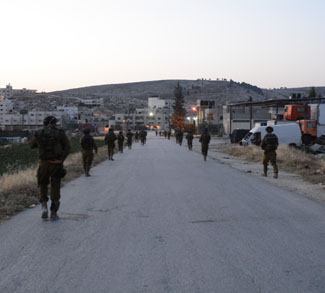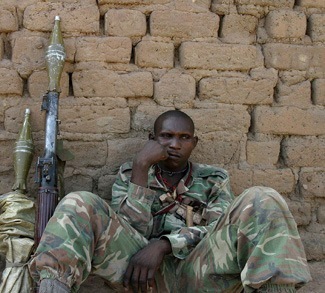“From this place, and from this day forth, begins a new era in the history of the world, and you can all say that you were present at its birth.”
— Goethe
Space wars are upon us. Present-day ground conflicts rely heavily on the infrastructure rendered operational by recurring space missions over the past sixty years. Nations across the globe are making unprecedented investments in both civilian space exploration and its military applications, increasing exponentially the possibility of conflicts in outer space. The militarization of space continues unencumbered by formal agreements and treaties. Grey zone tactics in outer space that fall below the threshold of open conflict continue uninterrupted by a cluster of nebulous governance mechanisms. Contestation and competition over space assets have entered the national security vernacular. Yet despite the self-evident prominence of the threat of force in space, the corpus of law best equipped to regulate and systematize norms of behavior in this domain remains elusive.
The norms and substantive rules of the modern international law of armed conflict alongside international criminal law might offer the requisite guidance in a current landscape where anarchy of meanings regarding the construal of conflict and use of force predominates. It will be up to the international community to decide whether evolving state practice in outer space can congeal behavior into norms, principles, and laws.
Legal Precedent
The principles of jus ad bellum (right to war) and jus in bello (justice in war) have evolved over centuries in response to the need for ethical guidelines in warfare. Jus ad bellum emerged from theological and philosophical debates in the Middle Ages, defining just causes for war, such as the right to self-defense and the duty to protect the innocent. Jus in bello, on the other hand, began to take shape with the development of chivalry codes in medieval Europe. In 1859, the gruesome human cost of the Battle of Solferino fought between the French, Sardinian, and Austrian forces prompted Henry Dunant to elucidate universal principles aimed at imbuing the theater of war with a semblance of humanity. European nation-states enthusiastically embraced Durant’s proposals, which aimed to provide legal protection for military wounded in the field and establish national societies to prepare for wartime needs. This support led to the gradual formalization of non-negotiable protections for war victims, culminating in the Geneva Conventions. The Geneva Convention of 1864 focused on the welfare of wounded soldiers, obligating states to aid them without discrimination. Subsequent conventions extended protections to shipwrecked personnel at sea and prisoners of war and aimed at safeguarding civilian populations during conflicts. The International Red Cross, established in 1870, was instrumental in alleviating wartime suffering. The Geneva Prisoners of War Convention of 1949 outlined the rights and treatment of captured soldiers, while the Geneva Convention relative to the Protection of Civilian Persons in Time of War aimed to safeguard civilians from the horrors of conflict. The International Red Cross, established in 1870, played a pivotal role in mitigating suffering during times of war.
The proliferation of conflicts, especially non-international ones, post-World War II prompted the creation of Two Additional Protocols in 1977. These protocols, Protocol I for international conflicts and Protocol II for non-international ones, enhanced protections for victims and imposed limits on wartime conduct. They extended safeguards to civilian medical and religious personnel, cultural heritage sites, and medical facilities.
The Geneva Law, which focuses on protecting individuals from suffering, complements the Hague Law, which delineates permissible conduct for military forces during armed conflicts. Together, they form essential pillars of international humanitarian law. The primary objective of the body of rules known as the Law of the Hague is to prohibit certain means and methods of combat that are deemed excessive. It encompasses various treaties and protocols aimed at regulating warfare and minimizing unnecessary suffering. Beginning with the Declaration of Paris in 1856, which addressed privateering and the conduct of enemy ships at sea, and extending to the Declaration of St. Petersburg in 1869, which outlined the legitimate aims of warfare and set limits on its methods, the Hague Conventions of 1899 and 1907 further solidified these principles. They explicitly banned the use of poisoned weapons and projectiles causing unnecessary suffering and established guidelines for belligerents in occupied territories. Article 22 of the Hague Convention IV underscores that the means of injuring the enemy are not without limits, applicable across all theaters of war.
Subsequent treaties and protocols aimed to curtail or prohibit weapons causing disproportionate suffering, such as poisonous gas, chemical, and biological weapons, and indiscriminate weapons like landmines and explosive remnants of war. Additionally, the Hague Cultural Property Convention of 1954 seeks to safeguard cultural heritage during armed conflict. The 1998 Rome Statute on the International Criminal Court complements these efforts by expanding upon the provisions of the law of armed conflict and addressing international crimes, including war crimes. It ensures adherence to international humanitarian law and establishes guidelines for the scope and methods of war and the use of force under public international law.
Fundamentally, the law of armed conflict embodies a set of clear and practical principles aimed at balancing humanity with military necessity. These principles include distinction between combatants and civilians, proportionality in the use of force, recognition of military necessity, limitation on means and methods of warfare, humanity in the treatment of protected persons, and the importance of good faith and reciprocity between opposing forces.
The non-governmental effort to clarify and articulate the application of laws of armed conflicts or international humanitarian law to outer space is already underway. The Woomera Manual on the International Law of Military Space Operations – an international research project spearheaded by the Universities of Adelaide, Exeter, Nebraska, and New South Wales – seeks to clarify existing laws applicable to military activities in space, particularly during periods of heightened tension or conflict when state and non-state actors might consider using force. Any resort to force by states, including in outer space, is governed by the prohibition of the threat or use of force under the UN Charter.
LOAC and Outer Space
Considering the comprehensive framework established by modern laws of armed conflict, the field of outer space law stands to benefit significantly from its principles and provisions. Just as these laws have evolved to regulate interstate warfare on planet Earth, they could serve as a foundational framework for governing activities in outer space. By adopting and adapting the principles of distinction, proportionality, limitation, and humanity, among others, outer space law can effectively address the unique challenges and complexities of space exploration, its use, and potential conflict.
The principles of distinction, which require a clear differentiation between military and civilian objects, and proportionality, which mandates that the use of force must be proportionate to the military objective, are particularly relevant in the context of outer space activities. As space becomes increasingly crowded with dual-use technologies, commercial satellites, spacecraft, and other assets, it is essential to establish guidelines to prevent unintentional harm to civilian infrastructure and personnel in space and on Earth.
Moreover, the concept of limitation, which dictates that the means and methods of warfare are not unlimited, can help prevent the escalation of conflicts in space by imposing restrictions on the use of certain weapons or tactics that could cause indiscriminate harm or result in long-term consequences for space exploration and utilization. Given a growing number of distinct weapons systems in orbit – from missile defense systems with kinetic anti-satellite capabilities, electronic warfare counter-space capabilities, and directed energy weapons to GPS jammers, space situational awareness, surveillance, and intelligence gathering capabilities – legal clarity rather than strategic ambiguity are crucial for ensuring the responsible and peaceful use of outer space.
Additionally, the principle of humanity underscores the importance of treating all individuals with dignity and respect, including astronauts, cosmonauts, and civilians who may be affected by conflicts in space. By upholding this principle, outer space law can ensure that human rights are protected and preserved, particularly in the profoundly challenging environment of outer space. Moreover, with civilians on the ground increasingly tethered to space technologies for communication, navigation, banking, leisure, and other essential services, the protection of their rights becomes a fundamental imperative.
The modern laws of armed conflict (LOAC) offer a valuable blueprint for developing a robust legal framework for governing activities in outer space. By integrating complementary principles of LOAC or international humanitarian law with the UN Charter into outer space law, policymakers can promote the peaceful and responsible use of outer space while mitigating the risks associated with potential conflicts in this increasingly contested domain.
Dr. Joanna Rozpedowski is a non-resident Senior Fellow at the Center for International Policy and Adjunct Professor at George Mason University.
The views expressed in this article belong to the author(s) alone and do not necessarily reflect those of Geopoliticalmonitor.com.




